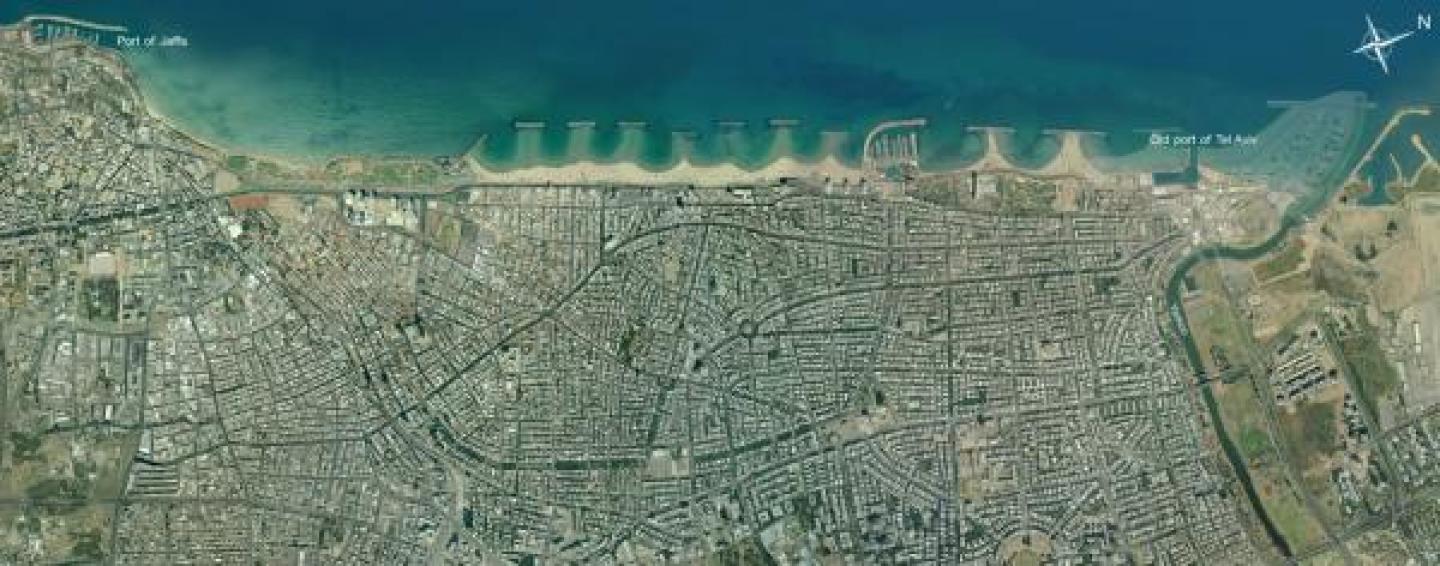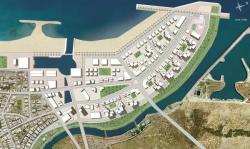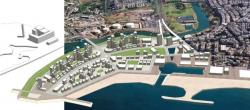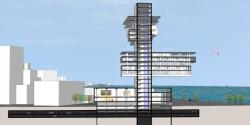Tel Aviv, “spring’s hill”, includes the 2/5 of Israel total population. Born in 1909 on dunes, the city was created by small districts linked up together. Its youthfulness resolutely makes it modern. Laboratory of a new architecture at the beginning, urban theatre where towers and other constructions grows up today, Tel Aviv became a city bursting with energy and optimism. Sir P. Geddes drew its first urban plan and imagined it with public spaces, gardens for everybody. Thanks to that, it is a green city which is breathing and its white part, jewel of the Bauhaus architecture, is registered to the world heritage by UNESCO.
Every year, thousands of immigrants arrive at Tel Aviv and the municipality must manage the increasing of housings capacities because city’s limits spread to suburbs. Nowadays, the “tayelet”, walk by the sea, is one of the most dynamic place. But at the north entrance things are like blocked. An abandoned peninsula remains. Roads don’t serve correctly this zone that is disused since the river got dry. Its strategic position, at the Yarkon River mouth, offers all the qualities required for a pleasant life space in continuity with Geddes mind. Then a global urbanism, which takes care of the existing and opens news fields, is experienced. It spreads on the peninsula and moves forward the sea until it recreates a visual link with Yafo. The impact of history gives a strong symbolic meaning to this place.
A free flow for the development of roads, a protection of the river and an important place for the public spaces are the main points of this urban approach without forgetting rehabilitation and restoration of the trade fair’s pavilions and the old port, other articulation of the past.
New equipments are developed to reply to the city requests: housing, stores, offices, gardens, the city continues and regenerates. In direction of a new territory: the sea. Towards the Mediterranean, towards Europe...
Geddes Centre results from the continuity of heritage. At the end of the peninsula, near an esplanade and a garden, this vertical public space is the result of the city’s image and is also dedicated to it. Like a landmark, it represents the formation of Tel Aviv, by fragments linked up together. Its program touches art, culture and city. Its vocation is to transmit a “heritage. The tower brings us from noise to silence, from contemplation to reflection, from discovery to surprise. Through its visit, we cross exhibitions and projections spaces, we can see study and meditation spaces where we can read, listen to music, communicate with other people by internet… New media technologies help us a lot and offer us a way to learn an infinite number of data: other cultures, other languages, other visions... Finally, its highest terrace is an observatory of the city where we get conscience of our scale and where we break loose with all our usual perceptions.
Aim’s project is to revive urbanity’s notion and to position Tel Aviv as a collective work. A view of the future has a meaning only if it looks in the past. Geddes Centre, conclusion of the complex, let the opportunity to anyone to express himself, to learn and to understand.
2006
2007






